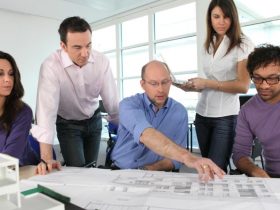In a broad sense, all design problems can be labelled as ill-defined, amorphous, and unclear by nature. Moreover, given the setting of an ever-changing modern world amidst social, political and financial unrest, some scholars have also termed them ‘wicked problems’. Such ill-defined problems require careful analysis before any suitable method is found to solve them (Reed, 2002). Rittel and Webber (1973) identify a series of characteristics that are instrumental in understanding such ‘wicked problems’ (See Figure 3) within the specialisation of Urban Planning. To solve these wicked problems, designers use a range of inductive, deductive and abductive skills to question ideas and form explanatory hypotheses, while evaluating the problems as the design progresses (Thagard and Shelley, 1997; Martin, 2006). Martin (2006) defines abductive logic as the logic of ‘what might be’; deductive as the logic of ‘what should be’ and inductive as the logic of ‘what is’. Aspects of abduction include that explanation is not a deduction; hypotheses are layered; abduction is sometimes creative; hypotheses might be revolutionary; completeness is elusive; simplicity is complex; and abductive reasoning may be visual and non-sentential (Thagard and Shelley, 1997).
Figure 3: Characteristics of ‘Wicked Problems’
Source: (Rittel and Webber, 1973)
Limitations of drawings: The language of architectural drawings and the representation of architectural objects on a sheet of paper also contributes to the wicked nature of design problems. Unless there is a higher level of understanding or collaboration between clients and themselves, the architects are only able to symbolise and address physical attributes of client needs on the drawing. Hill argues that this limitation of drawings, as a medium, has never been challenged, and often during the course of a drawing, the author is more engaged with its technical aspects, ignoring emotional and psychological issues, hence the needs of the user. Architectural drawings have a direct effect on the finished product; thus, only physical elements of buildings and their aesthetics continue to dominate the minds of contemporary architects, where function follows the form.
According to Robin Evans (1997), ‘the drawing presumably has been overvalued, whereas its unique power to affect the buildings is hardly accepted at all’ (p. 154). Similarly, it is worth noting that apart from architecture, all other arts, such as performance, installations, crafts, etc. are not as much dependent on drawings as a medium for their expression. ‘[These] are remarkable not just for the fact that they make little or no use of drawing, but for the impossibility of their development through this medium’ (Evans, 1997, p. 157). Likewise, Hill also argues that ‘… the architect who chooses not to recognise the differences between the spaces of architects and users, and between the building and the representations of the building, is unable to reach a level of mature self-awareness’ (Hill, 2001, p. 354).
The architect has a ‘representation of this space, one which is bound to graphic elements—to sheets of paper, plans, elevations, perspective views of facades, modules, and so on. This conceived space is thought by those who make use of it to be true, despite the fact—or perhaps because of the fact—that it is geometrical: because it is a medium of objects, an object in itself, and a locus of the objectification of plans. Its distant ancestor is the linear perspective developed as early as the Renaissance: a fixed observer, an immobile perceptual field, a stable visual world’ (Lefebvre, 1991, p. 361).
Likewise, is it the ‘end-product’ that should be attributed to the role and value of the architects, or the ‘process’ by which that end–product is achieved? Architects can conceive the final form of buildings and similarly visualise or imagine how a building might look like a finished product. However, clients can visualise neither the end product nor internal spaces from 2D drawings (and at times, not even from 3D visualisations). Clients’ primary concern from the first meeting onwards is the expectation to be guided all the time; this remains their only motivation to engage with an architect. Architects, on the other hand, tend to assume authority and responsibility for all aspects of the process, from design to delivery of the end‑product, including legal accountability. According to Banham (1996), ‘this willingness to assume responsibility, is only what makes architects a noble profession. It is not what makes them architects’ (p. 294). He further argues that instead of focusing on performing buildings tasks as service providers, their design-centric attitude not only reveals the fundamental value system on which architecture operate, but also the narrow and skewed assumptions on which it rests.
Flexibility in design: ‘Flexibility is based on the principle that a building can absorb, or adapt to reflect, changes in use’ (Hill, 2001). Walter Gropius contends that ‘the architect’s ultimate concern in designing buildings was their human use and occupation, and the reality that the architect’s involvement in a building ceased at the very moment that occupation began’ (Cited in Forty, 2000, p. 143). However, the introduction of the concept of flexibility in the architectural discourse permitted architects to, not only ignore the users’ of spaces but also extend their ‘involvement in a building, even after the occupation began and beyond the period of their actual responsibility’ (ibid.). DeGory argues that the inclusion of flexibility increases the value of an architect’s skills and the exchange value of the built environment (DeGory, 1998). Forty (2000) identifies three concepts of architectural flexibility, which not only help architects design multifunctional spaces but also ensure that clients are forced to return to them for any future consultations:
- Technical flexibility: For example, allows users to add additional floors, and make sure that the constructed structure is technically sound.
- Spatial redundancy: Flexibility to subdivide the internal space by partitions.
- An open plan: ‘suggesting a loose fit between space and use’ (Hill, 2001, p. 356).














Leave a Reply